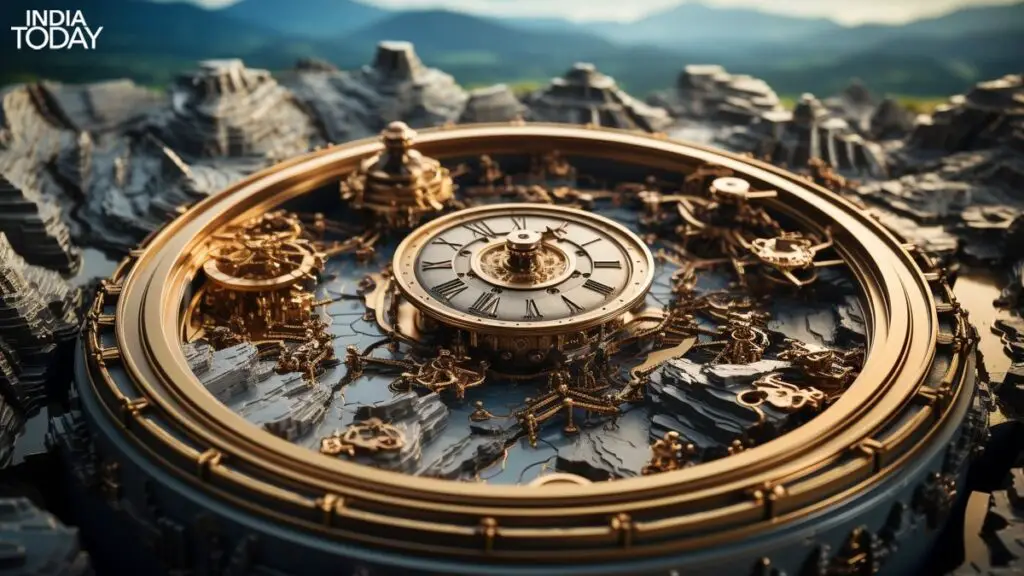Jeff Bezos invests $42 million in a clock designed to run for 10,000 years
After building Amazon into a multi-billion-dollar company and venturing into space tourism, Jeff Bezos has set his sights on a new project – a clock designed to run for 10,000 years and be passed down through generations. With a $42 million investment, Bezos aims to create an artefact symbolizing long-term thinking, to be housed inside a West Texas mountain. The monumental timepiece is the brainchild of computer scientist and inventor Danny Hillis, co-founder of Thinking Machines Corporation, a company that developed parallel supercomputers in the 1980s and 1990s.
What is the Mountain Clock?
Dubbed the Clock of the Long Now, the project envisions a timepiece that can keep accurate time for at least 10,000 years or over 3.6 million days. The Long Now Foundation, founded by Hillis in 1996, is responsible for the device’s development. The clock will be powered by mechanical energy harvested from sunlight, marking time through astronomic and calendric displays. A chime generator will produce over 3.5 million unique bell chime sequences, one for each day the Clock is visited in the next 10,000 years. Five chambers carved into the mountain will mark anniversaries at 1 year, 10 years, 100 years, 1,000 years, and 10,000 years.
“We aren’t planning to build animations for the 100, 1,000, and 10,000-year anniversary chambers but will instead leave those to future generations. We are providing a mechanical interface into those chambers that provide those future builders with power and the correct Clock triggering events,” says Bezos.
Why Run for 10,000 Years?
The principal aim is to pass on something lasting to future generations. Modern human civilization being about 10,000 years old, the clock will measure out a future equal to its past.
“Ten thousand years – the lifespan I hope for The Clock – is about as long as the history of human technology. When you start thinking about building something that lasts that long, the real problem is not decay and corrosion, or even the power source. The real problem is people,” says Danny Hillis.
The Science behind the Clock
The Clock is a fully mechanical timekeeping device constructed from durable materials like titanium, ceramics, quartz, sapphire, and 316 stainless steel. To ensure accuracy, it synchronizes with the noontime sun, using a solar synchronizer that harnesses sunlight through a synthetic sapphire window. The timing system, driven by a slow-moving titanium pendulum, incorporates corrections from the solar synchronizer and the Equation of Time Cam to prevent drift. Displays include an orrery depicting the sky, a Gregorian calendar date, and chimes generated by a mechanical computer. The clock’s power system, featuring a main winder and a solar winder, stores energy in weight, allowing it to run for extended periods without sunlight or manual winding.
How Will It Survive for 10,000 Years?
Over 10,000 years, the clock’s simple functions – energy gathering, timekeeping, and display – gain complexity. To ensure longevity, the team incorporates certain factors into development: Longevity, Maintainability, Transparency, Evolvability, and Scalability.
Longevity: The clock must accurately display time for 10,000 years, minimizing friction, staying clean, and anticipating adverse conditions.
Maintainability: The clock should be maintainable with minimal effort, using bronze-age technology, involving familiar materials, and providing a manual.
Transparency: Operational principles should be discernible through inspection, allowing understanding through rehearsed motions and preparing for restarts.
Evolvability: The clock should be improvable over time, with separated functions and simple interfaces.
Scalability: Working models from tabletop to monumental size should be achievable, ensuring all parts are of a similar size.
These considerations aim to ensure that the clock will be able to withstand the test of time and continue functioning for thousands of years to come.


